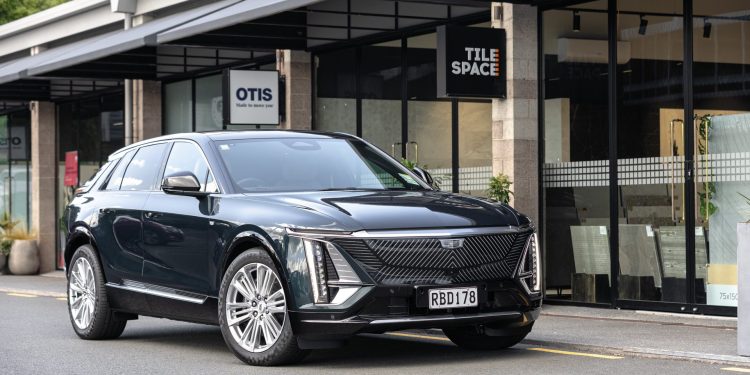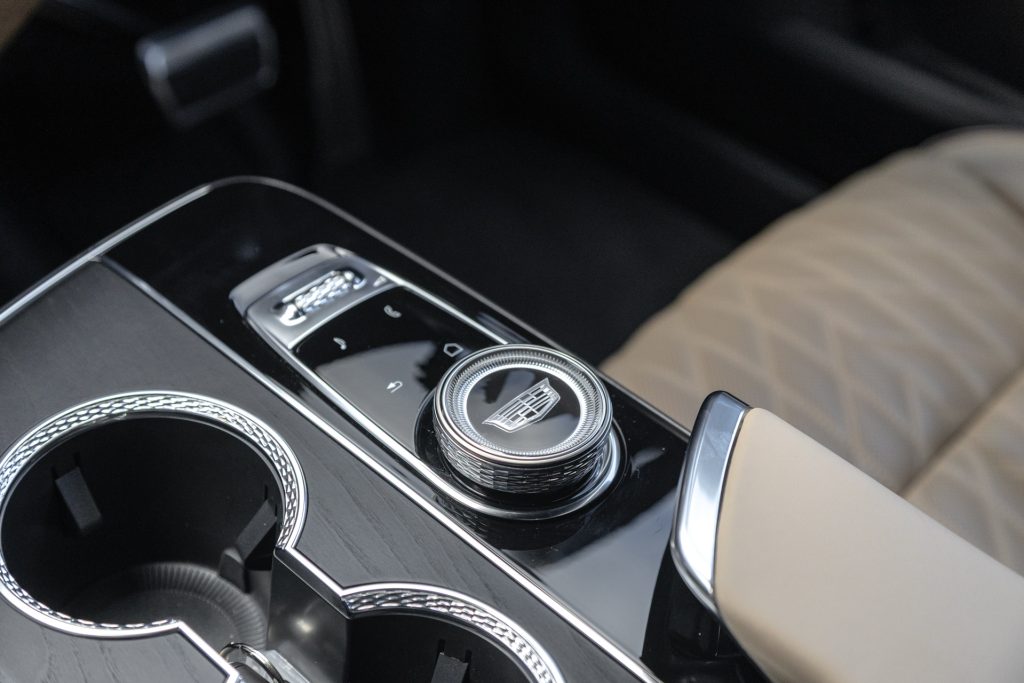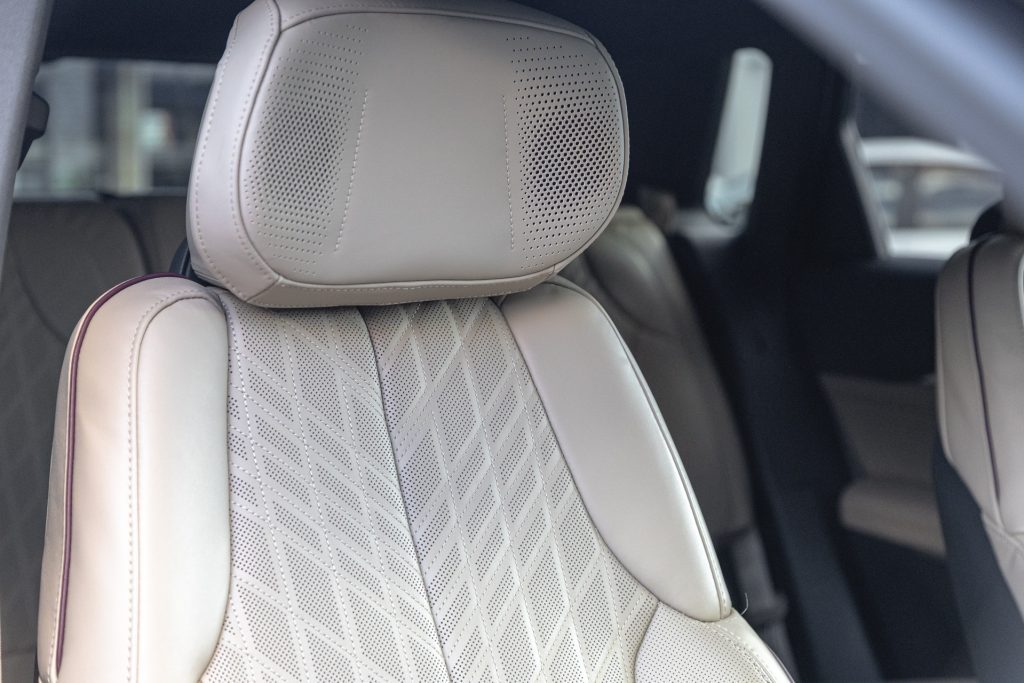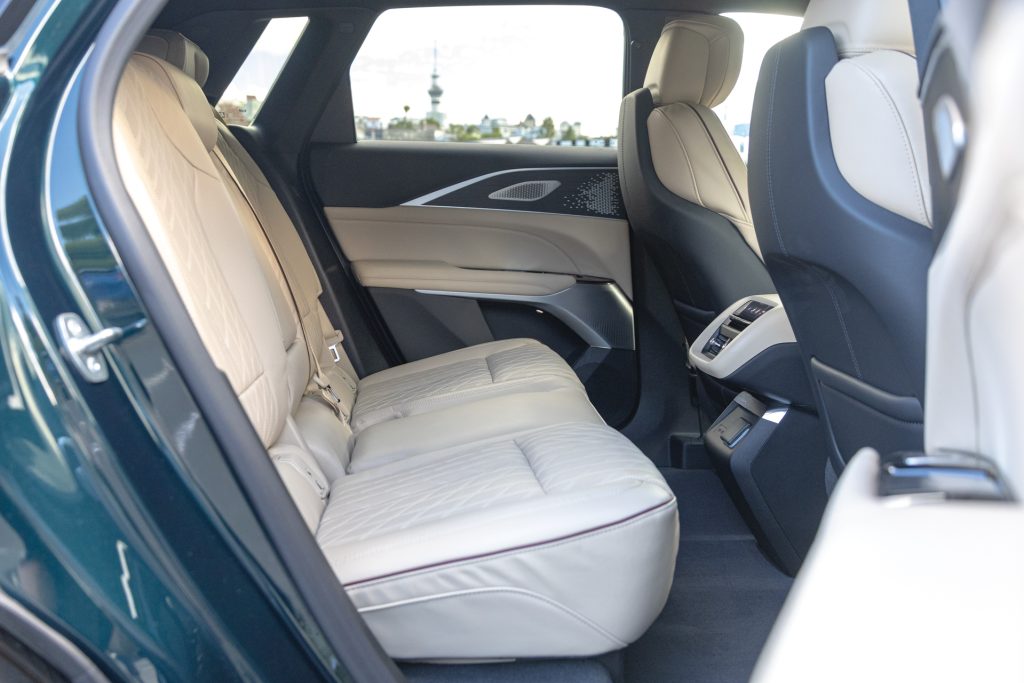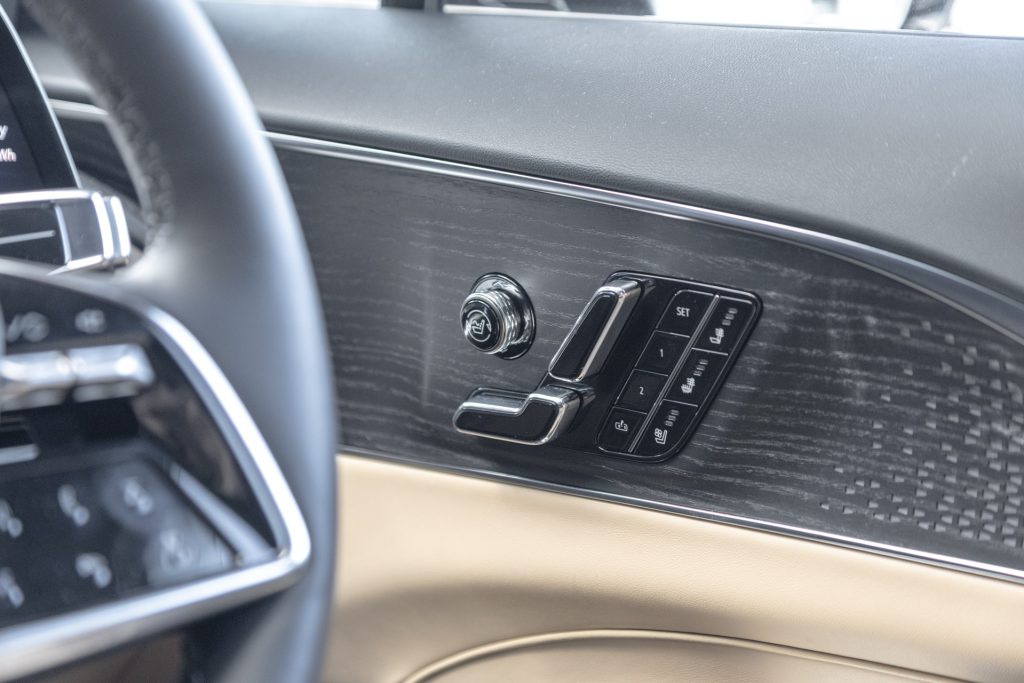2025 Cadillac Lyric Luxury Review
Words: Peter Louisson | Photos: Alex Schultz
We’re not used to new US brands entering the market and while Cadillac has been here in the past, this time it’s electric.
We’re regularly greeting new car marques from China, with fresh names dotting down here on a regular basis. But new American brands? Not so much. GMC just released its first product onto the market in Australasia and now Cadillac is selling its wares locally.
The brand is over a century old but its luxury bent makes it a smaller seller. However, it is now represented in 13 markets outside of North America. These include the Middle East and China.
New Cadillacs are now available in the Antipodes, with the vehicle you see before you, the Lyriq, being the first. We are only offered EVs here; none of the big ICE powered models is coming. Next year larger Optiq and smaller Vistiq will also go on sale. Cadillac is simply clever in copying Skoda by using the letter q instead of c at the end of its model names. That gives them a certain something.
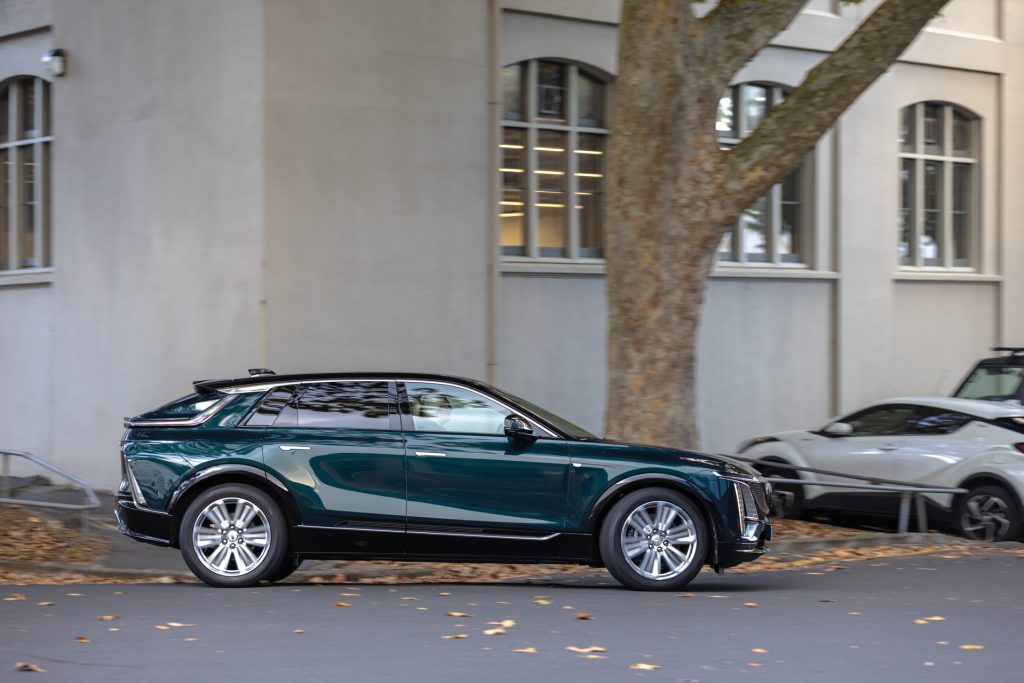
Two handbrakes?
Where they have been simply brilliant is in their use of two handbrakes. Ever since the birth of the modern EV era, which you’d have to thank Nissan for, regeneration has been a thing. It is now ubiquitous in EVs. Most have several levels of regeneration. In many you choose the setting within the touchscreen, although paddles are simpler. Others, like BMW and Audi, developed an adaptive option so it is automatically variable.
The Lyriq has just one paddle on the left side of the steering column. Initially I guessed that it must cycle through several levels of regen but no. Then I pulled and held the lever and that’s when the lightbulb went off. This is essentially like a finger brake. Given you can modulate how much ‘braking’ effect you want, this means that most of the time, you don’t need to go near the brake pedal at all. The icing is that if you pull and hold the lever when stopped, it initiates autohold. For those not bothered, there’s always single-pedal driving but it’s not as good. If this is the kind of smart left-field thinking Cadillac is bringing to bear on its cars, it bodes well for its entry into F1 next year.
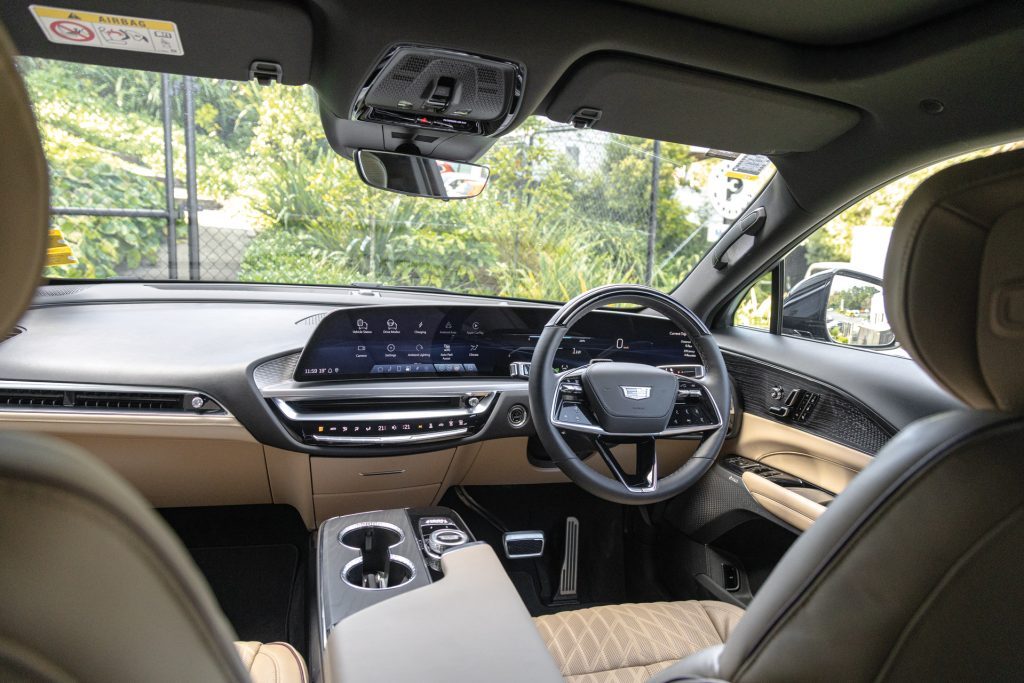
How much then?
Turning to the car you see here, there are two Lyriq models. Essentially there’s just one with either chrome finish on the outside or black.
They’re not brand new per se, having been on the market in the US since early 2022. This Luxury variant kicks off at $123,658.13 (really, down to the cent?) and the Sport variant with blackened highlights, different grille and wheels is available from $125,658.13.
Both are built in RHD format ex-factory, at the Spring Hill facility in Tennessee. There are no dealers because it is a direct-to-customer operation. Going up against German opposition, but priced more like Korean rivals (Ioniq 5 N-Line Limited for instance) they both come with luxury items, including 21-inch alloys, a curved 33-inch widescreen LED display, a 19-speaker audio system and a full glass roof.
How big exactly?
It is a sizable vehicle, Lyriq, without being gargantuan like some American SUVs. At a tick over 5m in length and with a wheelbase of 3094mm, it’s roughly BMW iX or Mercedes-Benz EQE sized. Kerb weight is a burly 2774kg. And that’s largely because of the 102kWh battery pack it totes about and its two electric motors, one per axle for AWD status. Both models share this powertrain. Touring range is 530km (WLTP). They can hook up to 190kW chargers and will add roughly 200km in 15min, so a recharge from 10-80 per cent takes around half an hour. Count on 10 hours of charging if you’re using an 11kW home wallbox.
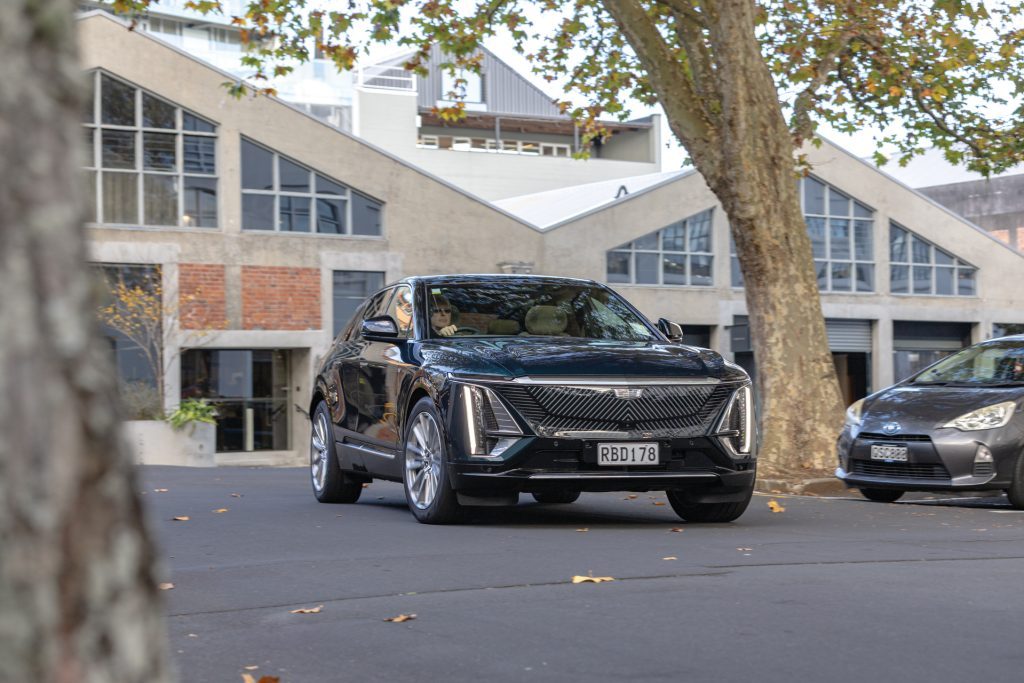
How quick then?
As to performance, this is brisk. With a combined power output of 388kW and 610Nm, Lyriq can hit 100 in about 5.3sec, an overtake dusted in three seconds. Energy use is around 20kWh/100km (22.5 quoted) so its range claim seems on the money.
While pretty quick, it is not in the same ballpark as the Lyriq V that will join the line-up soon. Output climbs to 458kW/880Nm and Cadillac ‘estimates’ a 0-100km/h time of 3.5 seconds, enough to make it ‘the quickest Cadillac ever’. Other models are promised for 2026, including Optiq, a smaller SUV with two motors, and Vistiq, a 5.22m three-row electric SUV.
What’s it like then?
From a design perspective this looks pretty good, with a determined front end and shiny grille. The fact that there’s no traffic sign recognition dates it slightly. Nor does it have a head-up display.
Inside are some special touches, like the wheel finished in tactile varnished wood at the top and leather where you hold it. There’s a heated wheel button right there on the wheel for ease of use. Above is a huge panoramic roof with an electric slide beneath.
Not all aspects fit the luxury bill. The indicators, for example, are clearly borrowed from a lesser model with distinctly ordinary action, quite an oversight really. Especially when there’s fancy knurling for some of the nearby knobs.
Functionally this is pretty straightforward; phone hook up is easy, and ditto for saving favourite FM stations. HVAC controls are below the central screen. There’s a decently resolved reversing camera image, handy on a sizeable vehicle. At the rear, there’s no wash/wipe unit.
So quiet and smooth
Underway, Lyriq functions with reference-level quietness, the highest SPL being 68.9db on chipseal. There’s a bit of motor hum at slow speeds to warn pedestrians and then just the sounds of silence on the go. The Lyriq features a five-link suspension set-up at the rear with frequency responsive dampers, said to deliver ‘a sublime ride and handling experience’. They definitely got the first bit right. Progress in this is about as luxury as it comes, without resorting to active roll control etc.
Around town this is very accommodating and on the open road it is also quiet and refined. Handling isn’t bad, given its weight and slow steering (3.4 turns lock to lock) but that’s as it should be, with the SUV priority being comfort.
Seats are great, heated and vented, but lumbar adjust is a bit of a trick. We like the vibrating seat warning when you’re too close to the vehicle in front or the Lyriq senses driver fatigue. The physical jolt wakes you up more than a bong, for sure.
Up front there’s a heap of oddments space, though under the hood there’s no front trunk. Out back, luggage capacity is vast at 793-1722L. Beneath the boot floor is a 50L compartment for charging cables. The emergency charger slots into a firm leather holder, one of the best designed and most convenient we’ve encountered in an EV.
We like the vertically aligned phone charger too; there’s no way this becomes a missile under heavy braking. And access is by key card, with a reader on the B pillar. These are easier to store than bulky key fobs.
Worthy then?
If you need a genuinely sizable electric SUV with decent range and outstanding ride quality and quietness, then Lyriq ticks those boxes. Its battery size, weight and energy use will demand a wall box install. Most other offerings this size, at least from Europe, are significantly more expensive and there are few large luxury offerings from China at present. So Lyriq kind of has this space to itself for a time.
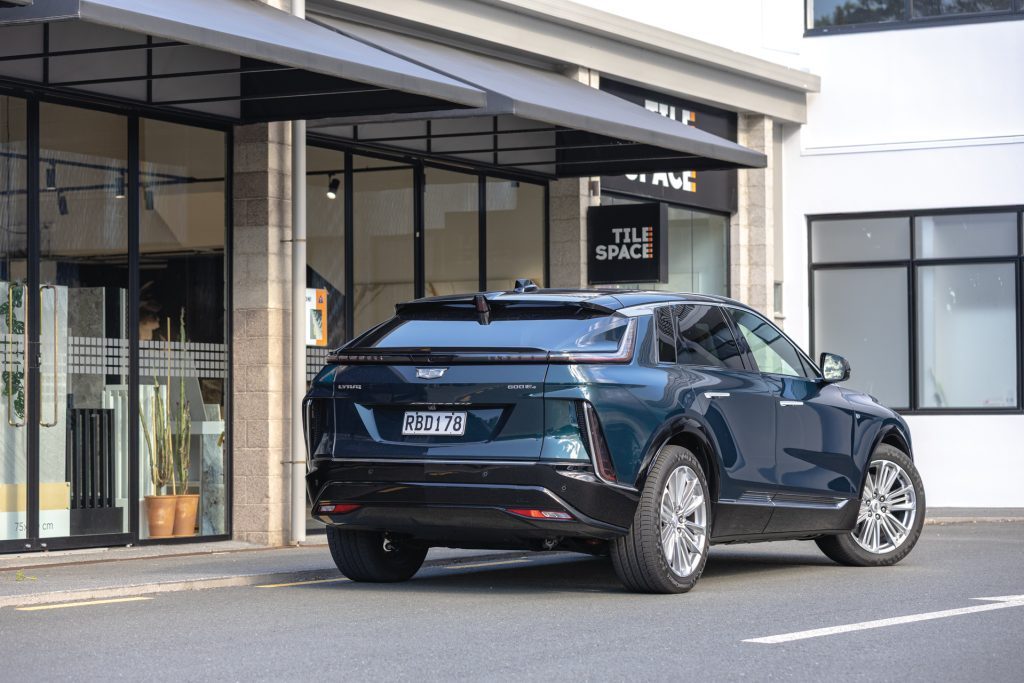
Cadillac Lyric Luxury
$123,658 / 22.5kWh/100km / 0g/km
0-100 km/h 5.35s
80-120 km/h 3.05s (87.7m)
100-0 km/h 36.65m
Speedo error 96 at an indicated 100km/h
Ambient cabin noise 68.9dB@100km/h
Motor output 388kW
Max torque 610Nm
Battery 102kWh
Range 530km
Drivetrain Single-speed auto / AWD
Front suspension Multilink / swaybar
Rear suspension Multilink / swaybar
Turning circle 12.1m (3.4 turns)
Front brakes Ventilated discs (390mm)
Rear brakes Discs (345mm)
Stability systems ABS, ESP
Safety AEB, ACC, BSM, LDW, RCTA, ALK, AHB
Tyre size f/r-275/45R21
Wheelbase 3094mm
L/W/H 5005 / 1977 / 1623mm
Track f-1674mm r-1674mm
Luggage capacity 793-1722L
Tow rating 500kg (1600kg Braked)
Service intervals 12 months / 12,000km
Scheduled servicing 5yrs
Warranty 5yrs / Unlimited km
ANCAP rating Not yet rated
Weight (claimed) 2687kg


